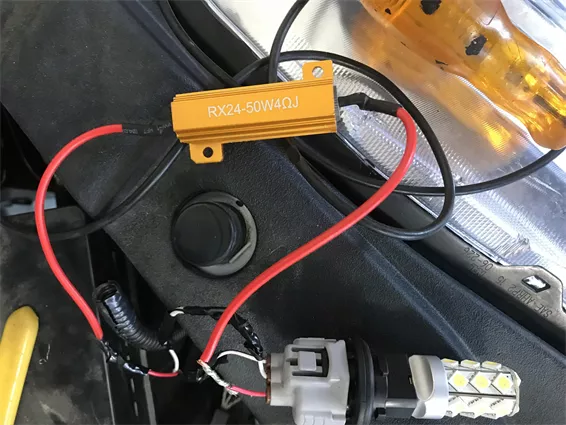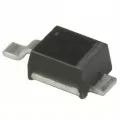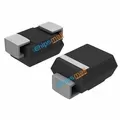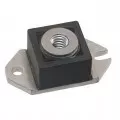OUTLINE:
How to Fix Hyper Flash Without a Resistor in 5 Ways
 845
845Hyper flash, known as rapid flash, occurs when the turn signal or indicator lights on a vehicle flash at a faster rate than normal, which is an annoying problem for drivers. In this passage, I'll show you how to fix hyper flash without a resistor.

The Cause of Hyper-Flash
Hyper-flashing refers to the situation where a vehicle's turn signals blink significantly faster than usual. This rapid blinking is a deliberate feature designed to alert the driver to a potential problem with the turn signal circuit.
The primary cause of hyper-flashing is a mismatch between the expected and actual electrical load on the turn signal circuit.
Traditional bulbs: Filament resistance is the basis for how standard automobile bulbs function. Light is produced when a filament gets heated up. A burned-out lightbulb indicates a loss of resistance, which makes the turn signal circuit interpret the situation as problematic and initiate hyper-flashing.
LED bulbs: When compared to filament lamps, LED bulbs have a far higher energy efficiency. They therefore use a lot less current. Similar to a burned-out lightbulb, the turn signal relay perceives this reduced current draw as a problem and begins hyper-flashing.
5 Ways to Solve Hyper Flash
To fix hyper flash, we have to install a big resistor. We've had to drill holes, mount big resistors on the car, and run wires over to the wires that go to the LED itself. Problem fixed. but the process is quite klutzy. Now here are a few simple ways to fix hyper flash without a resistor.
Method 1: Install an Electronic Flasher Relay
Replace the stock flasher relay with an electronic flasher relay specifically designed for LED bulbs. These relays are designed to work with the lower electrical resistance of LED bulbs and can prevent hyper-flash.
Method 2: Use Load Equalizers
Load equalizers are small devices that mimic the electrical load of a regular incandescent bulb. They can be installed in parallel with the LED bulbs to fool the vehicle's flasher relay into thinking that incandescent bulbs are in use. This helps maintain the normal flash rate.
Method 3: Check and Replace Bulbs
Ensure that all LED bulbs are working properly and have the correct specifications. Faulty or incompatible LED bulbs can cause hyper-flash. Replace any problematic bulbs with ones that are compatible with your vehicle's electrical system.
Method 4: Inspect Wiring and Connections
Check for any loose or faulty connections in the turn signal circuit. Make sure all the wiring is properly connected and secured. Loose connections can cause increased electrical resistance, leading to hyper-flash. Repair or replace any damaged or frayed wires.
Method 5: Update Vehicle Firmware
In some cases, hyper flash can be caused by outdated or incorrect firmware settings in the vehicle's electrical system. Check with your vehicle manufacturer or dealership to see if there are any available firmware updates or settings adjustments that can resolve the issue.
How to Prevent Hyper Flash
Knowing that hyper-flash can be really irksome and sometimes troublesome to handle, we truly need some ways to prevent it before it actually happens. After all, we don't want to give other drivers the wrong signals. So here we have some preventive measures to avoid the trouble as much as we can. Hopefully, these measures will save you the trouble.
1. Use LED Bulbs Specifically Designed for Your Vehicle
LED bulbs come in different types and specifications. It's important to choose LED bulbs that are compatible with your vehicle's electrical system. Look for bulbs that are specifically labeled as compatible with your make and model of vehicle.
2. Add load equalizers
Load equalizers are small devices that mimic the electrical load of a regular incandescent bulb. They can be installed in parallel with the LED bulbs to fool the vehicle's flasher relay into thinking that incandescent bulbs are in use. Load equalizers help maintain the normal flash rate and prevent hyper-flash.
3. Check wiring and connections regularly.
Ensure that all wiring connections within the turn signal circuit are secure and free from any loose or damaged connections. Loose or faulty connections can increase electrical resistance and lead to hyper flash. Repair or replace any damaged wires or connectors as necessary.
4. Have a regular update of vehicle firmware.
In some cases, hyper-flash can be resolved by updating the firmware or adjusting settings in the vehicle's electrical system. Check with your vehicle manufacturer or dealership for any available updates or adjustments that can address the hyper-flash issue.
[Must Know] Notes on How to Fix Hyper Flash Without Resistor
It's important to note that while these methods can help fix hyper-flash without using a resistor, they may not be universally applicable to all vehicles or LED bulb installations.
It is also recommended to consult your vehicle's manual or seek assistance from a professional if you are unsure or uncomfortable performing these modifications yourself.
Final Verdict
By trying the ways given above, I hope you can find a useful way of how to solve hyper-flash without resistor in your car and possibly prevent hyper-flash in the future. Don't forget to consult your vehicle's manual or seek professional assistance if necessary.

Disclaimer: The views and opinions expressed by individual authors or forum participants on this website do not represent the views and opinions of Chipsmall, nor do they represent Chipsmall's official policy.

share this blog to:








